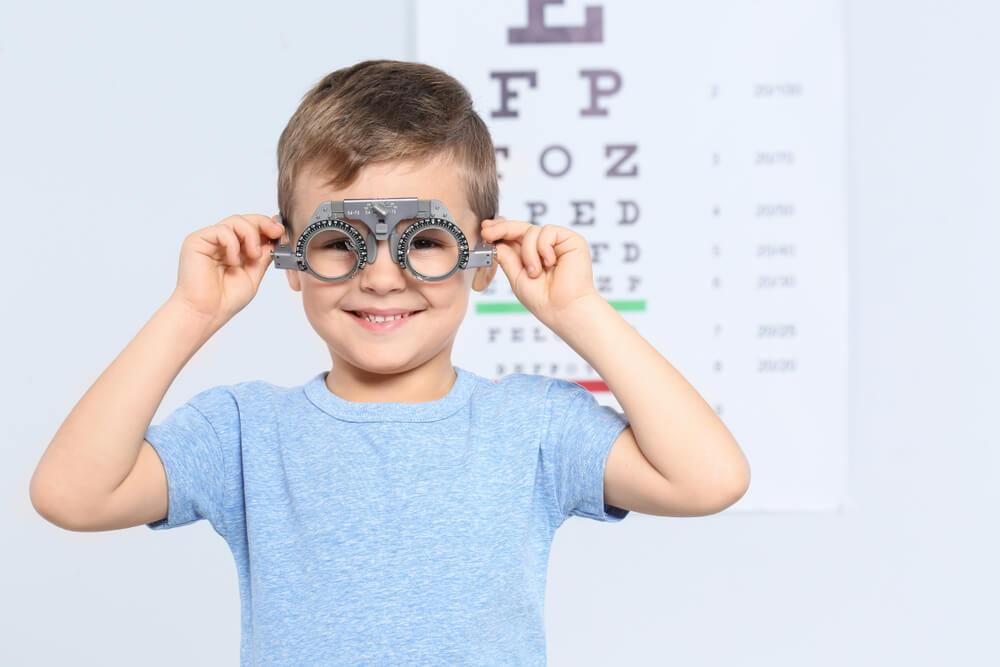
August is Children’s Eye Health and Safety Month, and a great opportunity to shift our focus to the importance of good eye health for kids.
Adults aren’t the only ones who can suffer from eye injuries and illnesses. Nearly 7% of children under the age of 18 have a diagnosed eye and vision problem, including common issues like near-sightedness (myopia) and crossed eyes (strabismus). And many more may face acute eye injuries due to sports or other activities.
Dedicating a month to children’s eye health helps bring awareness to the issues kids can face. It also highlights the impact of good eye health on a child’s overall development.
Below, we’re sharing some of the key factors to consider when it comes to kids’ eye health, as well as quick tips for ensuring that eyes stay healthy in childhood and beyond.
Kids aren’t likely to face the type of age-related degenerative eye conditions that affect adults. But that doesn’t mean there aren’t some serious concerns. There are a number of common eye conditions that can affect children and should be addressed as soon as possible.
There is also the risk of eye injuries. For this reason, experts recommend that children wear protective eyewear when playing sports. It is also essential to seek treatment immediately in the case of physical or chemical injuries to the eyes.
Your best tool in protecting your child’s eye health is regular eye check-ups. A specialist will be able to detect problems at their earliest stages and start your child on the proper course of treatment.
It’s never too early to start good eye habits. Beyond having your kid’s eyes checked on a regular basis, promote good eye health by teaching little ones how to care for and protect their eyes. This includes eating healthy foods, staying active, and spending time outside. Kids should also be encouraged to let a grown-up know if they are experiencing eye pain or irritation.
Children aren’t immune from dry eyes and the associated discomfort they can cause.
Dry eyes may cause itchiness and redness. They could also result in eyes that water excessively. The reason kids get dry eyes varies, but may be due to allergies or immune disorders. Left untreated, dry eyes can cause long-term problems, so they should be addressed right away.
To prevent and manage dry eyes, ensure kids stay properly hydrated and adequately treat any underlying conditions that may impact the eyes. A doctor may also recommend specialized eye drops or other dye eye treatments.
Eye pain can have all sorts of causes, from injuries and illness to foreign objects and too much screen time. Seek medical attention for eye pain that doesn’t resolve quickly, or that is coupled with swelling or redness in or around the eye. Pain that radiates to the area surrounding the eye is also a concern.
The treatment for eye pain in children depends on the cause. In many cases, alleviating discomfort is as easy as getting rid of the reason for the pain. Eye drops or gels can be used to remove foreign bodies and promote healing, while other treatments, like prescription medications, may be used to treat underlying conditions.
You can’t protect your kids from everything, but you can help them avoid some common eye hazards. Protective eyewear is a must during sports and other physical activities. Likewise, it’s important to encourage good screen habits, such as putting devices away if your eyes feel sore or strained.
Other age-appropriate safety tips you can teach your kids include:
Children model behaviors they see, so engage kids in fun activities that promote eye health awareness and make your own eye health a priority. And if you need additional support, contact our team at Mid Atlantic Retina to learn more about children’s eye conditions and treatments.